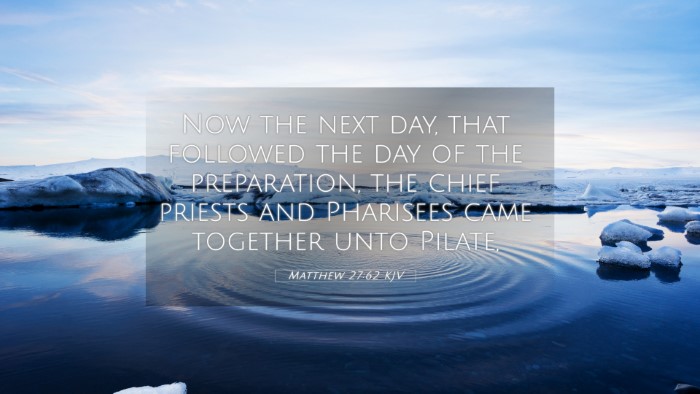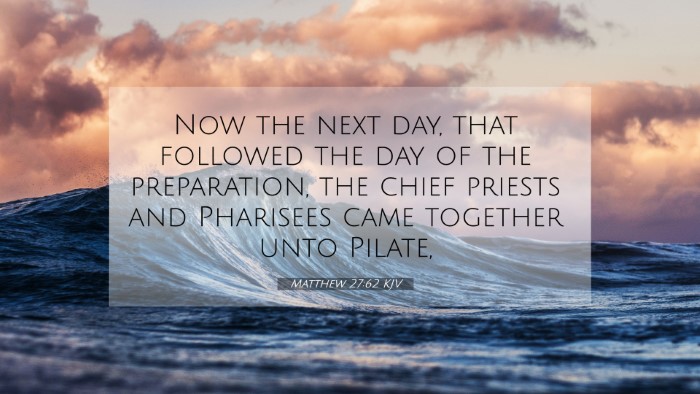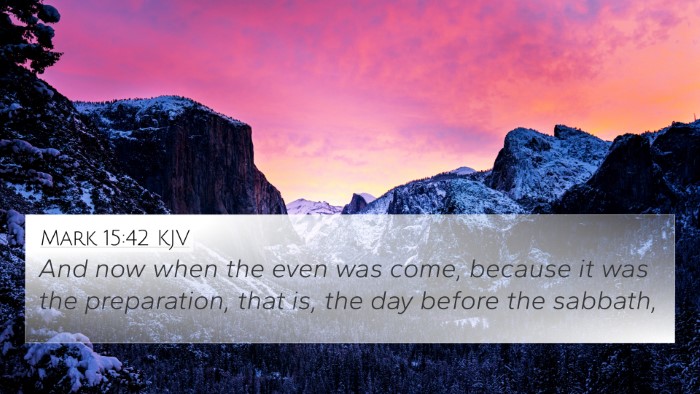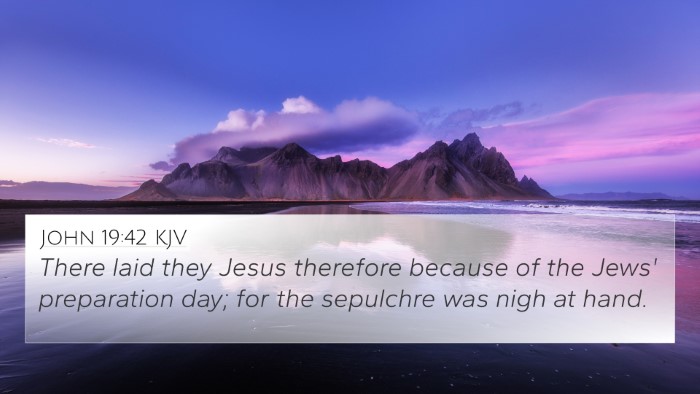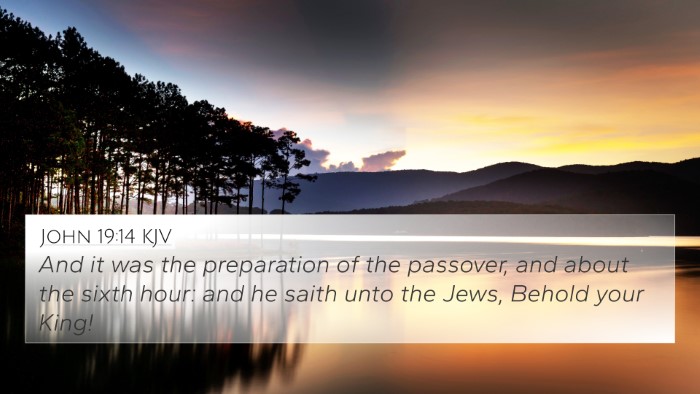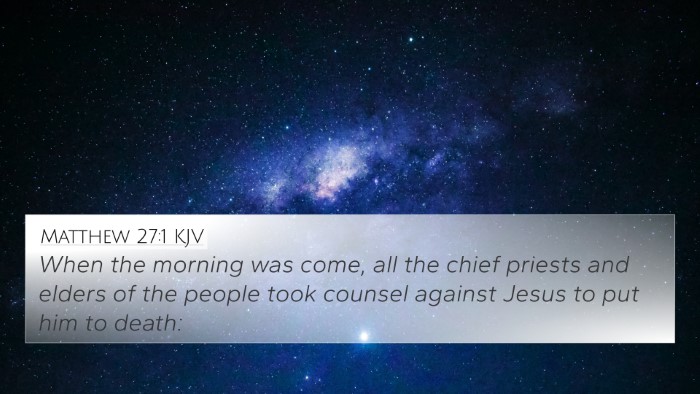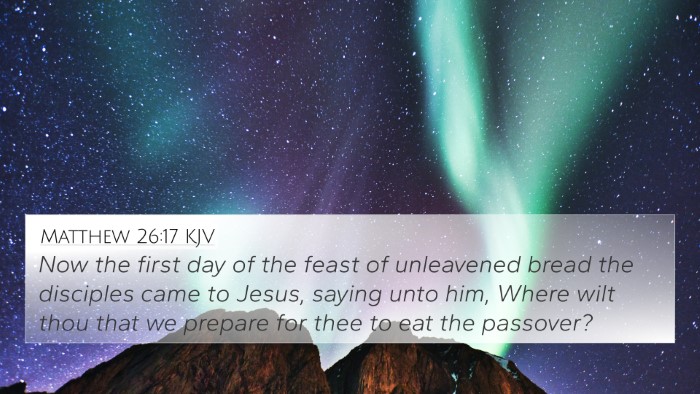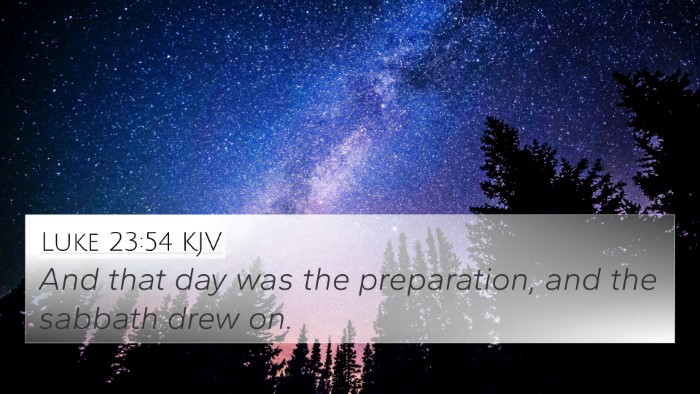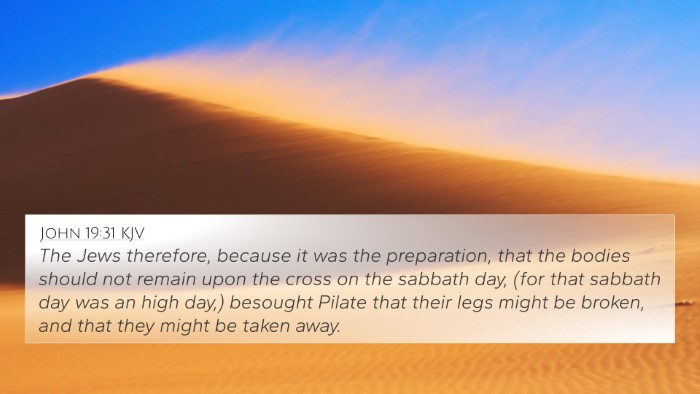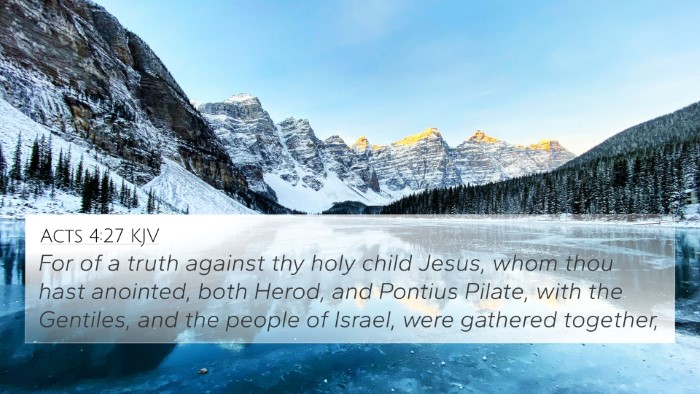Understanding Matthew 27:62
Matthew 27:62 states: "The next day, that is, after the day of Preparation, the chief priests and the Pharisees gathered before Pilate."
This verse falls in the context of the events following the crucifixion of Jesus Christ. It highlights the actions and concerns of the religious leaders regarding Jesus' burial and the potential for His resurrection. The significance of their gathering is multi-faceted and requires an in-depth analysis.
Combined Insights from Public Domain Commentaries
Matthew Henry Commentary
Matthew Henry notes that this passage showcases the determination of the chief priests and Pharisees to prevent any disturbances related to Jesus' body after His death. Their actions underline a fear of the possible resurrection, which they perceive as a threat to their authority and religious practices.
Albert Barnes Commentary
Albert Barnes emphasizes the political maneuvering within this verse, observing that the religious leaders sought to solidify their control by ensuring that Jesus’ followers could not claim that He rose from the dead. They convened to secure a Roman guard on the tomb, highlighting their continuous opposition to Jesus even after His death.
Adam Clarke Commentary
Adam Clarke interprets this verse in the broader context of Messianic prophecy and fulfillment. He suggests that the actions of the Pharisees may reflect their deep-seated skepticism towards Jesus' claims and serve as an ironic contrast to His teachings about eternal life and resurrection.
Thematic Connections and Biblical Context
Several themes emerge from Matthew 27:62. Primarily, the verse illustrates:
- Fear and Control: The chief priests' fear of losing their influence over the people is paramount.
- Conflict Between Belief Systems: This verse epitomizes the clash between the emerging Christian faith and established Jewish leadership.
- Fulfillment of Prophecy: Their actions may inadvertently contribute to the fulfillment of Jesus’ predictions about His death and resurrection.
Related Bible Verse Cross-References
Understanding Matthew 27:62 also involves recognizing its connections to other scripture. Below are several pertinent cross-references:
- Matthew 26:3-4: Highlights the plot against Jesus by the chief priests and scribes.
- Matthew 27:63: Continues the narrative of the Pharisees expressing their concerns about Jesus’ predictions.
- Mark 15:1: Indicates how the religious leaders took measures involving Jesus’ fate to Pilate.
- Luke 23:1-2: Describes the accusations the religious leaders made against Jesus before Pilate.
- John 11:47-53: Reflects the council of the Sanhedrin and their fears regarding Jesus' influence.
- Acts 2:22-24: Peter refers back to the events surrounding Jesus' death and resurrection.
- Acts 4:1-3: The empowerment of the apostles by the Holy Spirit amidst opposition.
Cross-Referencing Biblical Texts
Studying Matthew 27:62 in conjunction with these other verses allows for a deeper understanding of the actions of the chief priests and the wider implications of Jesus' death. This method of cross-referencing Biblical texts sheds light on:
- Thematic Bible verse connections: How fears about Jesus' resurrection resonate across different passages.
- Inter-Biblical dialogue: The continual confrontation between faith and skepticism.
- Bible verse parallels: Showing how different Authors reflect on the implications of Jesus’ death and what it means for believers.
Tools for Bible Cross-Referencing
For those looking to delve deeper into cross-referencing Bible study, tools such as a Bible concordance and Bible cross-reference guides can greatly enhance understanding. They enable readers to:
- Identify connections between Old and New Testament: Understanding prophecies and their fulfillments.
- Engage in comparative Bible verse analysis: Drawing parallels between the Gospels and the Acts.
- Utilize comprehensive Bible cross-reference materials: Strengthening one’s grasp of scriptural themes.
User Intent and Further Exploration
If you are looking for what verses are related to Matthew 27:62 or want to find cross-references for this verse, consider exploring the relationships this verse has with those listed above. This verse, while seemingly simple, opens a window into the fears and motivations that shaped the early opposition to the Gospel.
Conclusion
Through careful examination and comparative study of Pauline epistles within the context of Matthew 27:62, we reveal the complex tapestry of themes concerning authority, faith, and the resurrection. By employing effective tools for Bible cross-referencing, readers can develop a richer understanding of scriptural narratives and their interconnections.

